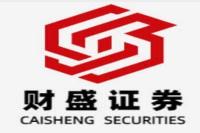People's Bank of China's Open Market Operations: A Deep Dive into the 1016 Billion Yuan Reverse Repo
Meta Description: People's Bank of China (PBoC), reverse repo, open market operations, liquidity, monetary policy, interest rate, 7-day reverse repo, 1.50% interest rate, financial markets, Chinese economy.
The People's Bank of China (PBoC), the central bank of the world's second-largest economy, recently injected a massive 1016 billion yuan (approximately $146 billion USD) into the financial system via a 7-day reverse repurchase agreement (reverse repo). This isn't just another news headline; it's a crucial move with far-reaching implications for the Chinese economy, impacting everything from interest rates and inflation to the availability of credit for businesses and consumers. Think of it as a carefully calibrated injection of adrenaline into the financial system's heart – a vital sign showing the PBoC's commitment to maintaining stability and fostering economic growth. But what does this actually mean? This isn't some arcane ritual practiced by shadowy figures in dark rooms. It's a tangible action with real-world consequences for everyday people, businesses, and the global economy. We'll unravel the mystery behind this significant financial maneuver, exploring the mechanics, the motivations, and the potential repercussions. Get ready to dive deep into the fascinating world of Chinese monetary policy, where billions of yuan are constantly in motion, shaping the economic landscape and impacting our lives in ways we often don't fully appreciate. This isn't just about numbers on a screen; it's about understanding the pulse of a nation's financial health. So, fasten your seatbelts, because this journey into the heart of Chinese monetary policy is going to be illuminating and, frankly, quite exciting! We'll leverage insights from seasoned financial analysts, explore the historical context of such operations, and even consider potential future implications. Prepare to be informed, engaged, and maybe even a little impressed by the intricate dance of financial engineering that keeps the Chinese economy humming.
People's Bank of China (PBoC) Reverse Repo Operations
The PBoC's December 20th, 2024, injection of 1016 billion yuan through a 7-day reverse repo operation at a 1.50% interest rate is a key example of open market operations. These operations are the PBoC's primary tool for managing liquidity in the banking system and influencing short-term interest rates. Think of it like this: the PBoC is a skilled conductor of a vast financial orchestra, and open market operations are its baton, subtly adjusting the tempo and volume of economic activity.
How Reverse Repos Work:
In a reverse repo, commercial banks essentially lend money to the PBoC in exchange for government securities. These securities act as collateral. After seven days, the PBoC returns the principal plus the agreed-upon interest. By increasing the supply of money in the banking system, the PBoC effectively lowers short-term interest rates, making it cheaper for banks to borrow money. This, in turn, encourages lending to businesses and individuals, stimulating economic activity. It’s a bit like giving the banks a temporary financial boost, enabling them to lend more freely.
Why did the PBoC conduct this large-scale operation?
Several factors likely contributed to the PBoC's decision:
-
Maintaining Liquidity: Ensuring sufficient liquidity in the banking system is paramount to prevent financial instability. A healthy level of liquidity allows banks to meet their obligations and prevents credit crunches. This large injection suggests a proactive move to ensure ample reserves.
-
Supporting Economic Growth: By lowering interest rates, the PBoC aims to encourage borrowing and investment, stimulating economic growth. Lower borrowing costs translate to lower costs for businesses and consumers, ultimately boosting spending and investment.
-
Counteracting Economic Slowdown: China's economy has been facing some headwinds recently. This injection could be seen as a counter-cyclical measure to offset potential slowdowns and maintain a stable economic trajectory.
-
Managing Inflation: While stimulating the economy, the PBoC also needs to keep inflation in check. The 1.50% interest rate suggests a delicate balance – striking a sweet spot between boosting economic activity and preventing runaway price increases. It's a tightrope walk, requiring precision and expertise.
The Significance of the 1.50% Interest Rate
The 1.50% interest rate is significant. It reflects the PBoC's assessment of the current economic situation and its policy objectives. A higher rate would suggest a greater concern about inflation, while a lower rate indicates a stronger focus on stimulating growth. This 1.50% rate shows that the PBoC is trying to find a middle ground, balancing growth and inflation concerns. It's a carefully chosen number, reflecting a sophisticated understanding of delicate economic levers.
Open Market Operations: A Tool for Fine-Tuning the Economy
The PBoC utilizes open market operations as a precision instrument to fine-tune the economy. These operations aren't random; they're based on careful analysis of various economic indicators, including inflation, interest rates, and economic growth forecasts. This isn't guesswork; it’s based on rigorous data analysis and a deep understanding of economic principles. Imagine it as a complex chess game, where each move is carefully calculated to achieve a desired outcome.
Potential Repercussions and Future Implications
The impact of this substantial injection will unfold over time. We can expect to see:
-
Increased Lending Activity: Businesses should see an increase in the availability of credit, potentially leading to increased investment and expansion.
-
Lower Borrowing Costs: Consumers might benefit from lower interest rates on loans, mortgages, and other forms of credit.
-
Stimulated Economic Growth: Increased lending and investment should contribute to a boost in economic activity, creating jobs and driving economic growth.
However, there are potential downsides:
-
Inflationary Pressures: Increased money supply could potentially lead to inflationary pressures if not carefully managed. The PBoC will need to closely monitor inflation indicators to ensure the injection doesn’t fuel price increases.
-
Asset Bubbles: Increased liquidity could potentially inflate asset prices, creating bubbles in certain sectors. The PBoC will need to monitor asset markets closely to prevent speculative excesses.
Understanding the Impact on Global Markets
This move by the PBoC will also have ramifications for global markets. Given China's substantial role in the global economy, any significant shift in its monetary policy can have ripple effects across the world. Investors will be watching closely to see how this injection impacts the value of the yuan, global commodity prices, and overall market sentiment. It’s a reminder that the Chinese economy isn't an isolated island; it's deeply interconnected with the global financial system.
Frequently Asked Questions (FAQ)
-
What is a reverse repo? A reverse repo is a short-term borrowing transaction where commercial banks lend money to the central bank (PBoC) in exchange for government securities.
-
Why did the PBoC choose a 7-day maturity for the reverse repo? The 7-day maturity provides a balance between short-term liquidity management and the need for consistent policy signaling.
-
What are the potential risks associated with this large-scale injection of liquidity? The main risks are increased inflationary pressures and the potential for asset bubbles.
-
How does this operation affect the interest rate? By increasing the money supply, the operation tends to lower short-term interest rates.
-
What are open market operations? Open market operations are the buying and selling of government securities by the central bank to manage the money supply and interest rates.
-
How does this PBoC action impact the global economy? Given China’s significant role, this action influences global currency markets, commodity prices, and investor sentiment.
Conclusion
The PBoC's 1016 billion yuan reverse repo operation is a significant event with far-reaching implications for the Chinese and global economies. It’s a testament to the complex and dynamic nature of monetary policy, a constant balancing act between stimulating growth and managing risks. While the immediate effects are still unfolding, this move underscores the PBoC's proactive approach to managing liquidity, supporting economic growth, and navigating the challenges of a complex global economic environment. The coming months will be crucial in assessing the long-term impact of this major injection of liquidity into the Chinese financial system. Stay tuned, as this is a story that is still being written.



